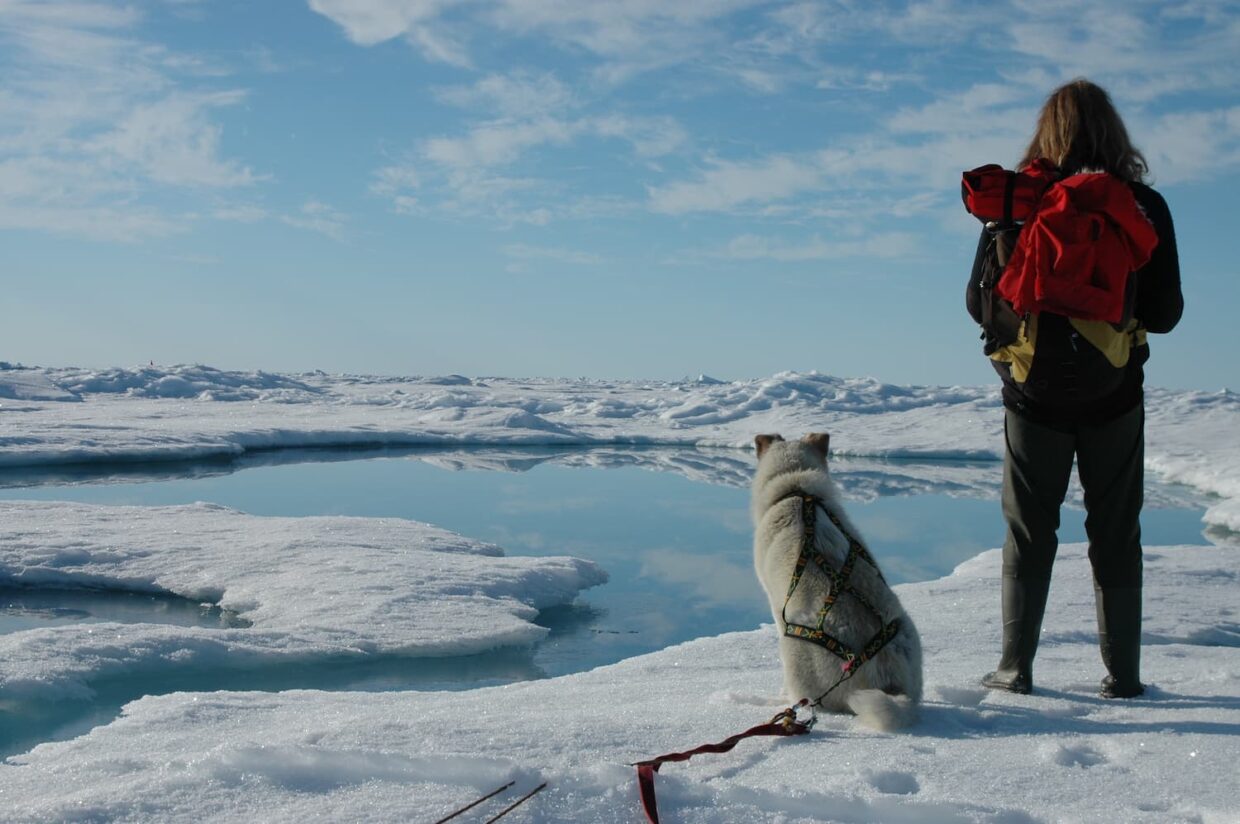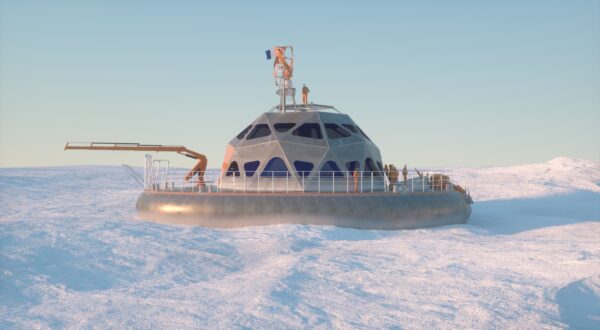The Arctic, a little-known ocean at the forefront of the climate crisis
15 years after a first historic mission to the North Pole aboard the schooner Tara, Tara Ocean Foundation team has imagined and designed a new odyssey of a completely different scale with the intention of accelerating research on climate change and the endangered Arctic biodiversity. Tara Polar Station will be locked in the ice and drift with the ice floe. Scientific exploration in the heart of the Arctic Ocean is planned to last for more than 20 years. Beyond research, the challenge will be to protect the health of planet Earth and life.
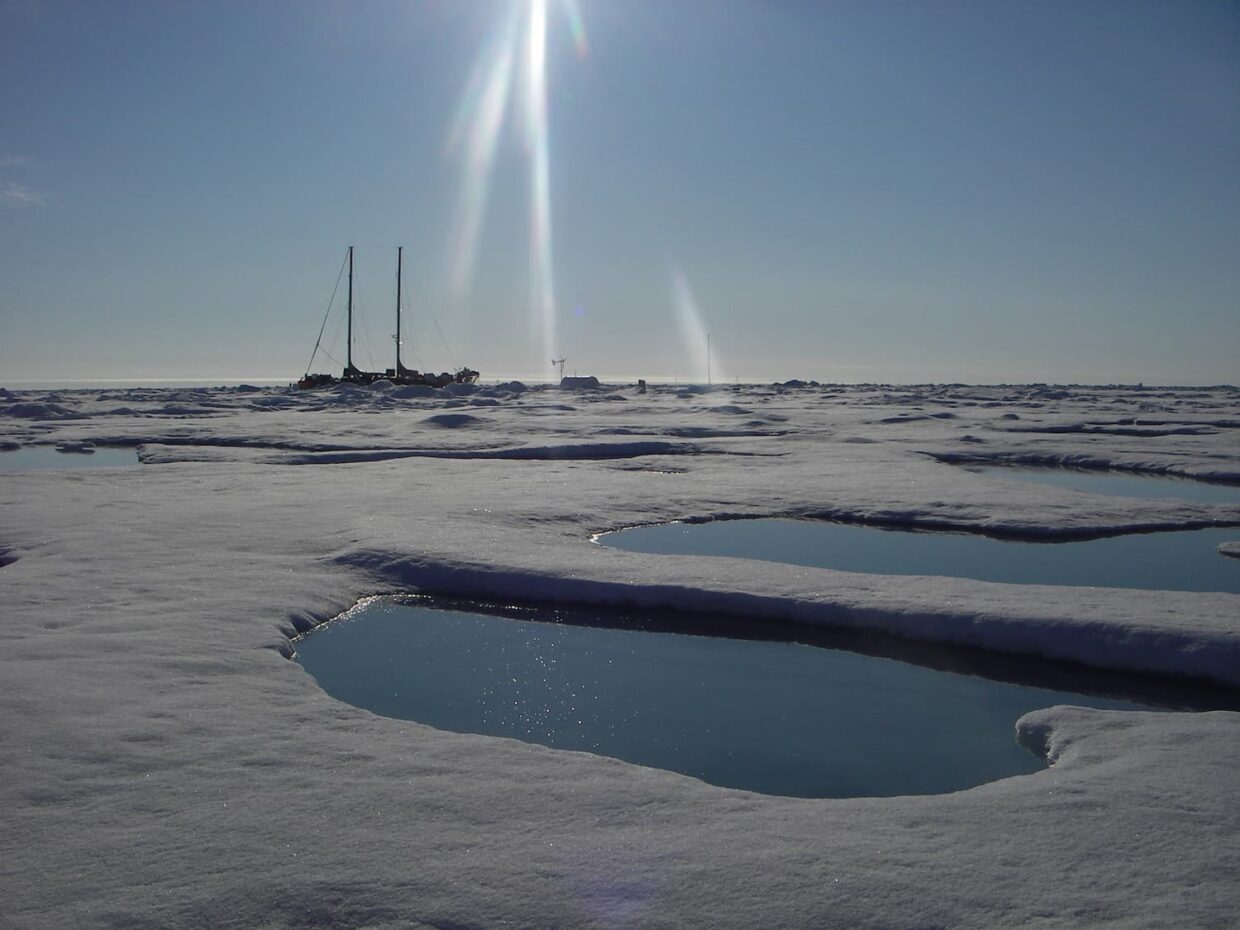
A polar ecosystem, sentinel of the climate
The glacial Arctic Ocean, the only polar ocean on our planet, covers an area equivalent to five times that of the Mediterranean Sea, or approximately 14 million km². Covered with ice floes most of the year, this ocean is bordered by eight countries: Norway, Sweden, Russia, Finland, Denmark (Greenland), Iceland, Canada, and the United States (Alaska)
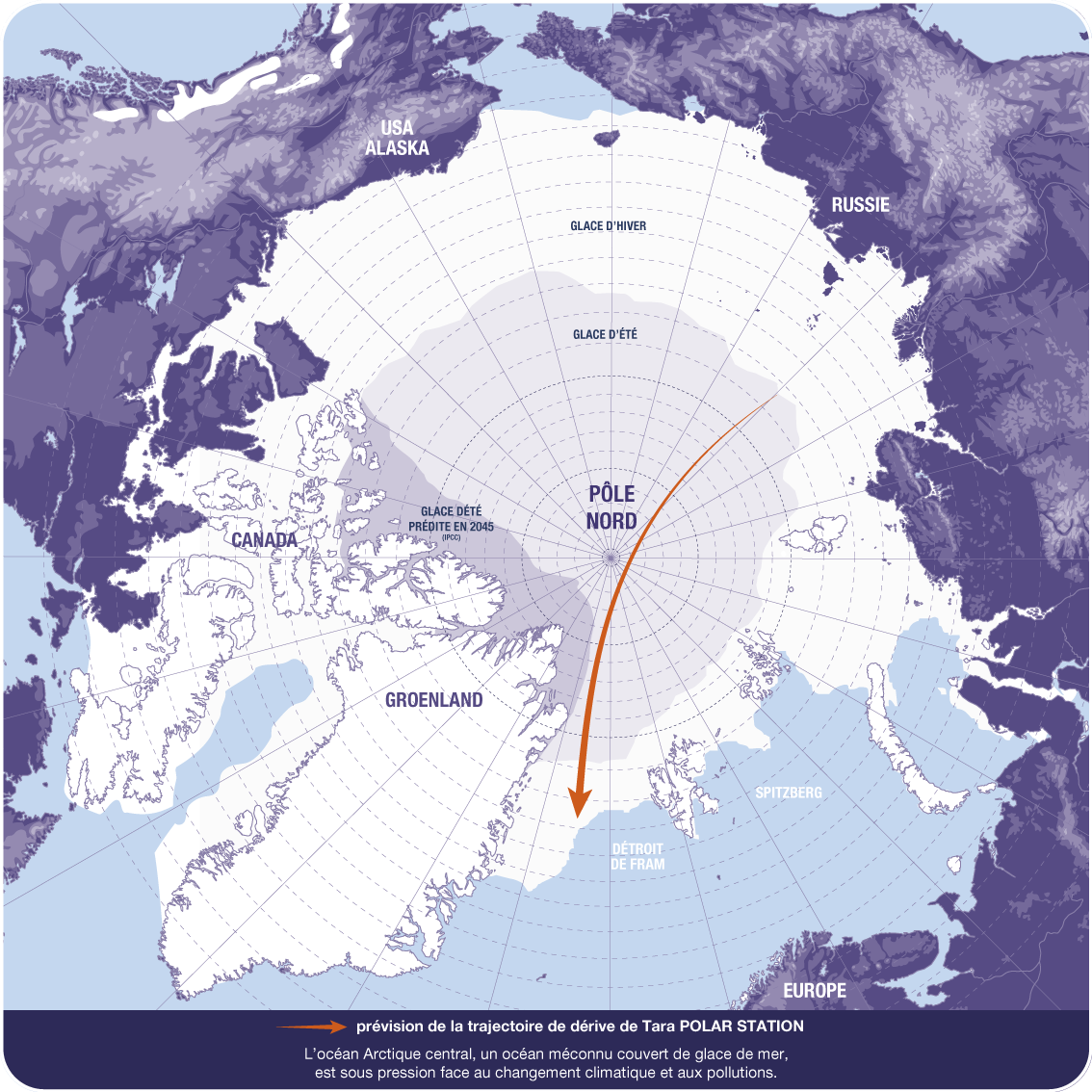
The meteorological limit of the Arctic is defined by an isothermal line of 10°C in July, a threshold below which trees cannot grow. Its geographical limit is defined by the latitude at which the sun sets on June 21– it’s the Arctic Circle at latitude 66° 33′ N.
The IPCC, in its report on the physical bases of the climate published in August 2021, recalled that the observed warming is particularly strong in the Arctic. Over the past 50 years, the Arctic has warmed twice as fast as the global average. We are almost certain that during the 21st century, warming in the Arctic will be stronger than the global average. The consequences on the sea ice and Arctic ecosystems will therefore be very serious. Gerhard Krinner CNRS Research Director, climatologist and co-author of the 6th IPCC assessment report
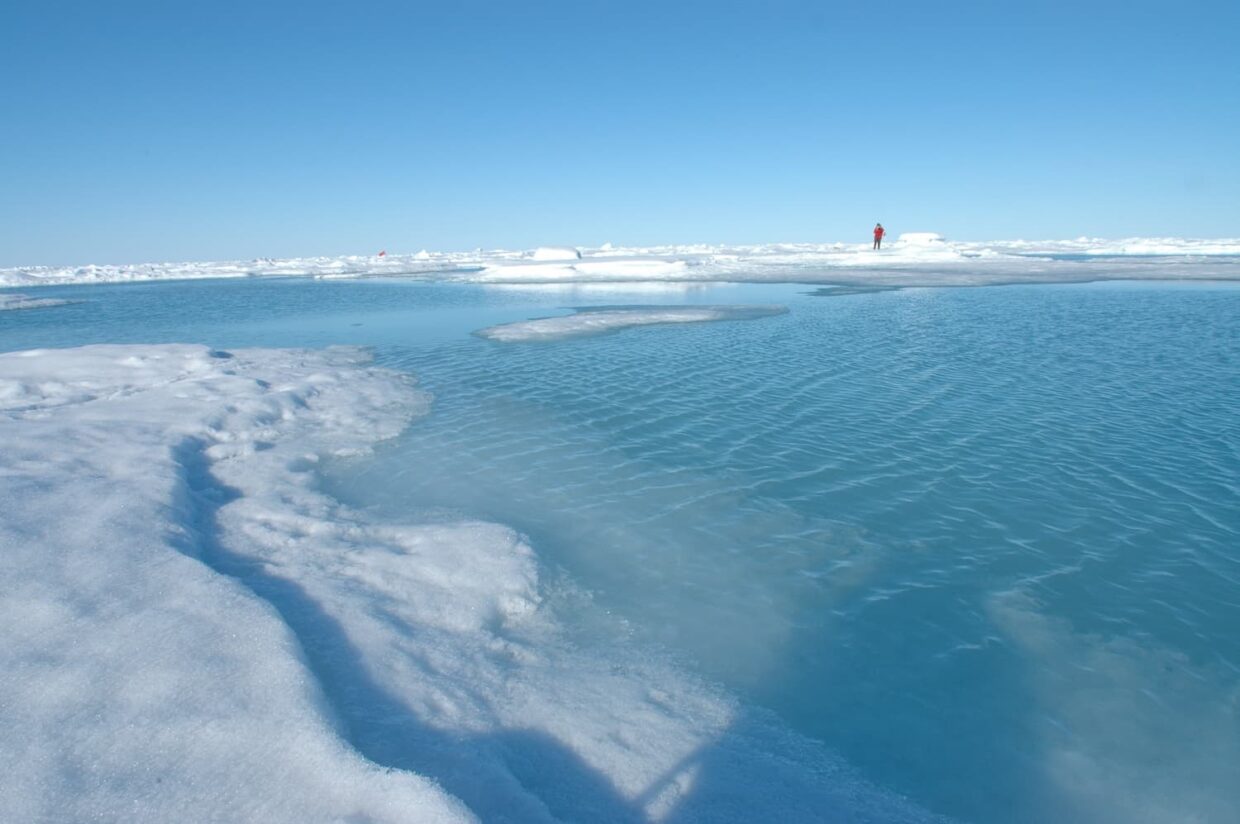
What are the effects of global warming in the Arctic on the atmosphere?
The increase in the average annual surface temperature of the Arctic (land and ocean) between 1971 and 2019 was three times greater than the increase in the global average during the same period. This is the phenomenon known as Arctic amplification. There is also an increase in extreme events such as heavy rain or snow, storms, high temperatures and forest fires. Kathy Law, Atmospheric Chemist, CNRS, LATMOS
We’re going to see the ice disappear from the North Pole!
Most of the Arctic Ocean surface freezes every winter. With climate change, this ice floe – almost three meters thick in the 70s and 80s – is only a little more than one meter on average today. 70% of this ice has already disappeared! Every summer, this thin layer of ice melts drastically, covering only 1/3 of the ocean’s surface by mid-September. The IPCC predicts that starting around 2045, under the effect of current dynamics, there will be virtually no more sea ice in September.
The consequences of these upheavals are particularly perceptible on this sensitive environment and its fragile ecosystems. The base of the food chain in this very particular ocean is an endemic ecosystem adapted to the ice floe. This ecosystem is at the forefront of the effects of the climate crisis. Its very existence is linked to the fate of this evanescent ice floe. The effects on the environment are already very noticeable:
- reduction of sea ice
- alteration of ice quality
- absorption of more solar energy
- arrival of invasive species further south
- melting of the surrounding permafrost
- increased humidity in the air
Rapid developments in biodiversity
The Arctic – with its glaciers – is the first territory on our planet to be impacted in the era of climate crisis. These rapid developments have major repercussions on ecosystems and biodiversity, both at the base of the region’s food chain (plankton) and on the emblematic marine mammals that depend on it (polar bears, arctic fox, beluga whales, narwhals, seals etc.).
Climate change, predicted and observed for 30 years, is particularly strong in the Arctic. We see a unique environment disappearing before our eyes! What happens in the Arctic is not restricted to the Arctic: consequences are global. Melting of the Greenland ice cap is underway, in the long term causing a sharp increase in sea level. Thawing of large areas of permafrost in Siberia and Canada could generate significant additional greenhouse gas emissions which would further amplify warming. Gerhard Krinner CNRS Research Director, climatologist and co-author of the 6th IPCC assessment report
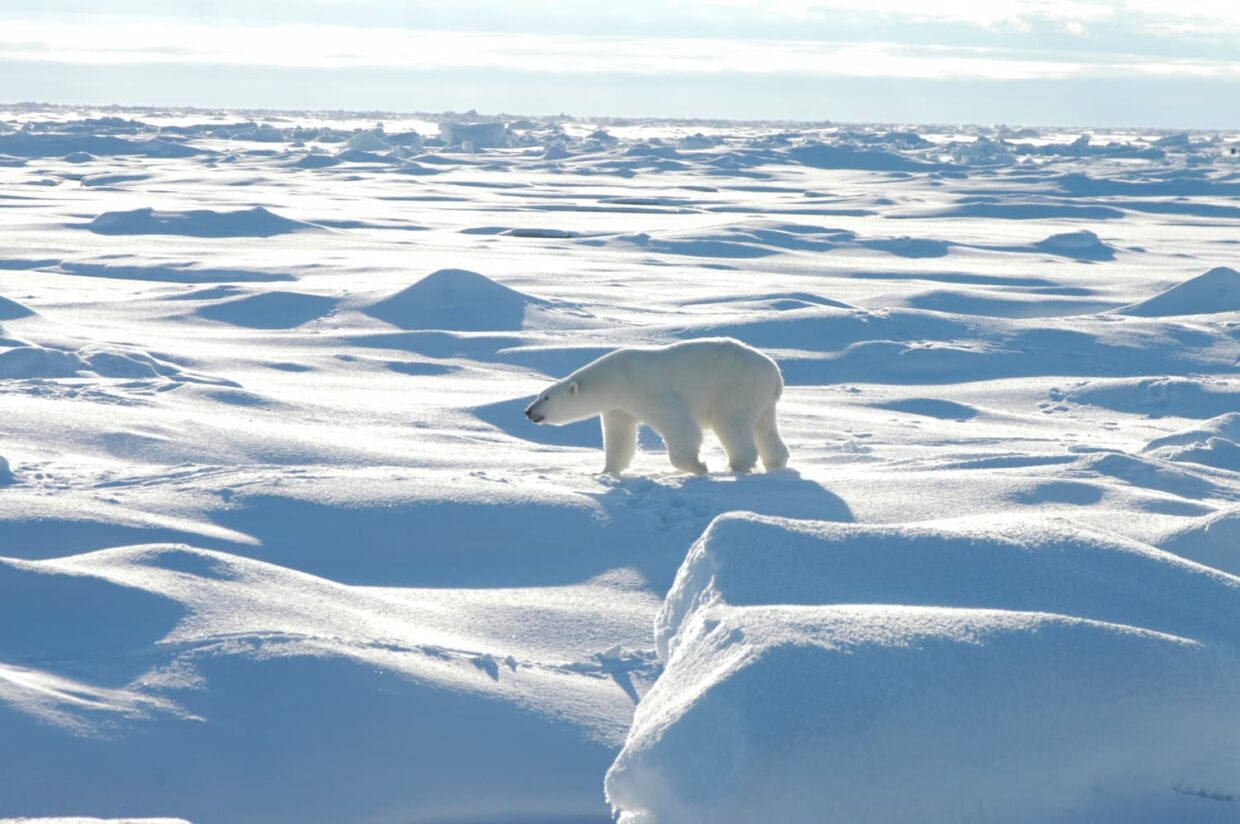
Why is it so important to know the Arctic better?
The Arctic Ocean is a remote and extreme environment about which we know very little. Satellite observations are very recent. We still don’t know how organisms living in the heart of this environment cope with the extreme seasonality of light, temperature, sea ice and ocean dynamics, and how they survive during the long polar night, which lasts for almost half the year. We absolutely need observations to connect the dots, to complete the full annual cycle and track year-to-year variability. Tara Polar Station will bear witness to the history of the Arctic for the coming decades! Over the past two years we have been preparing a solid scientific program, with around 30 international laboratories behind the CNRS. Chris Bowler, CNRS Research Director at the Ecole Normale Supérieure and Chairman of the Foundation’s Scientific Committee
Tara Polar Station polar expedition
The objective of theTara Ocean Foundation’s return to the North Pole is to provide time for scientific research, in summer and especially in winter during the polar night, to make the Arctic accessible – to document and describe the dynamics of these transformations, to objectify scientific data and identify the richness of local biodiversity. This mission will be crucial to better understand the impact of climate change in the Arctic and the impact it could have on the rest of the planet.
Apart from a recent experience with the icebreaker Polarstern, the demands and adversity of this extreme and dynamic environment have never allowed biologists, in particular, to focus all year round on this unique region. This will be the goal of the women and men aboard Tara Polar Station.
The polar odyssey about to begin will have several major long-term objectives:
- Improve knowledge of biodiversity on Earth by exploring regions still inaccessible today.
- Reveal the unique adaptations of evolution to enable life in this extreme environment.
- Analyze and predict the consequences of melting sea ice and pollution on these unique and fragile ecosystems.
- Describe Arctic fish stocks and the impact of arrival of more temperate species.
“We need to understand the role of the atmosphere in Arctic climate change, and how it is evolving. In particular, we need to improve our understanding of the balance of solar radiation, including shortwave and longwave radiation fluxes. The role of clouds and aerosols (which are important for the formation of clouds and the shadow they can cause) is one of the main uncertainties in global climate models. In this context, multi-year measurements on Tara Polar Station of clouds, aerosols and these radiative fluxes throughout the year will provide essential data, in particular beyond 80° North where there are no satellite observations.” Kathy Law Atmospheric chemist, CNRS, LATMOS
“Observations which can be made with a drifting station are extremely valuable for studies of still poorly understood processes in the atmosphere, in sea ice and in the Ocean. For example, the increasingly long ice-free season will lead to changes in marine ecosystems, which could have consequences on the chemical composition of the atmosphere. But little is known about these processes. Observations in all seasons are essential to fill these knowledge gaps.” Gerhard Krinner CNRS Research Director, climatologist and co-author of the 6th IPCC assessment report
In the medium term, these explorations will refine the forecasts of weather models in Europe by 2050 and the consequences of climate change on the functioning of our planet. Our results can be used to improve policies regarding the governance of the Arctic and the World Ocean.
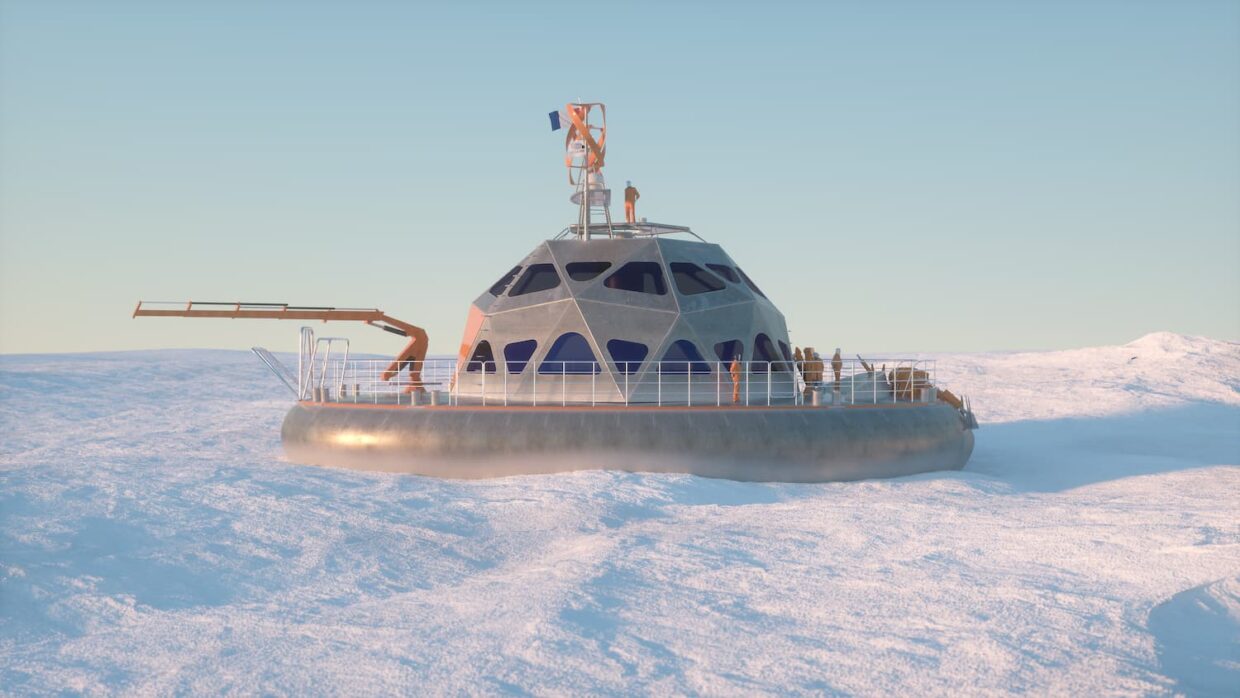
How will scientific research be carried out in the Arctic?
With this new polar program, we will deploy a drifting observatory and laboratory to study the ecosystems of the central Arctic Ocean. We have the ambition to maintain this unique French research station in the ice for at least two decades, beginning in 2026, during 10 consecutive missions, until 2045. We are the last generation able to document the Arctic sea ice as it disappears in the coming years…
The Polar Station will accommodate up to 18 people aboard in summer and 12 in winter. It will be equipped with 6 laboratories: a wet lab for handling samples (including ice cores); dry labs with instrumentation; labs dedicated to on-site experimentation on the little-known Arctic organisms and their ecosystem.
To understand the biology of this unique Arctic ecosystem, a complete set of instruments will be deployed to study the physicochemical interactions between the atmosphere, snow, sea ice and the underlying Ocean. A series of microscopes, cytometers and other instruments for advanced cell biology will enable experimentation with living organisms and observation of intracellular phenomena. DNA sequencing tools tested on the schooner Tara will also be deployed on site by a team of engineers and researchers serving an international research program. Some observations will be repeated during each expedition over 20 years; others will be more specific in response to research questions that emerge over the course of discoveries.
Chris Bowler, CNRS director of research at the Ecole Normale Supérieure, and chairman of the Tara Ocean Foundation’s scientific committee
